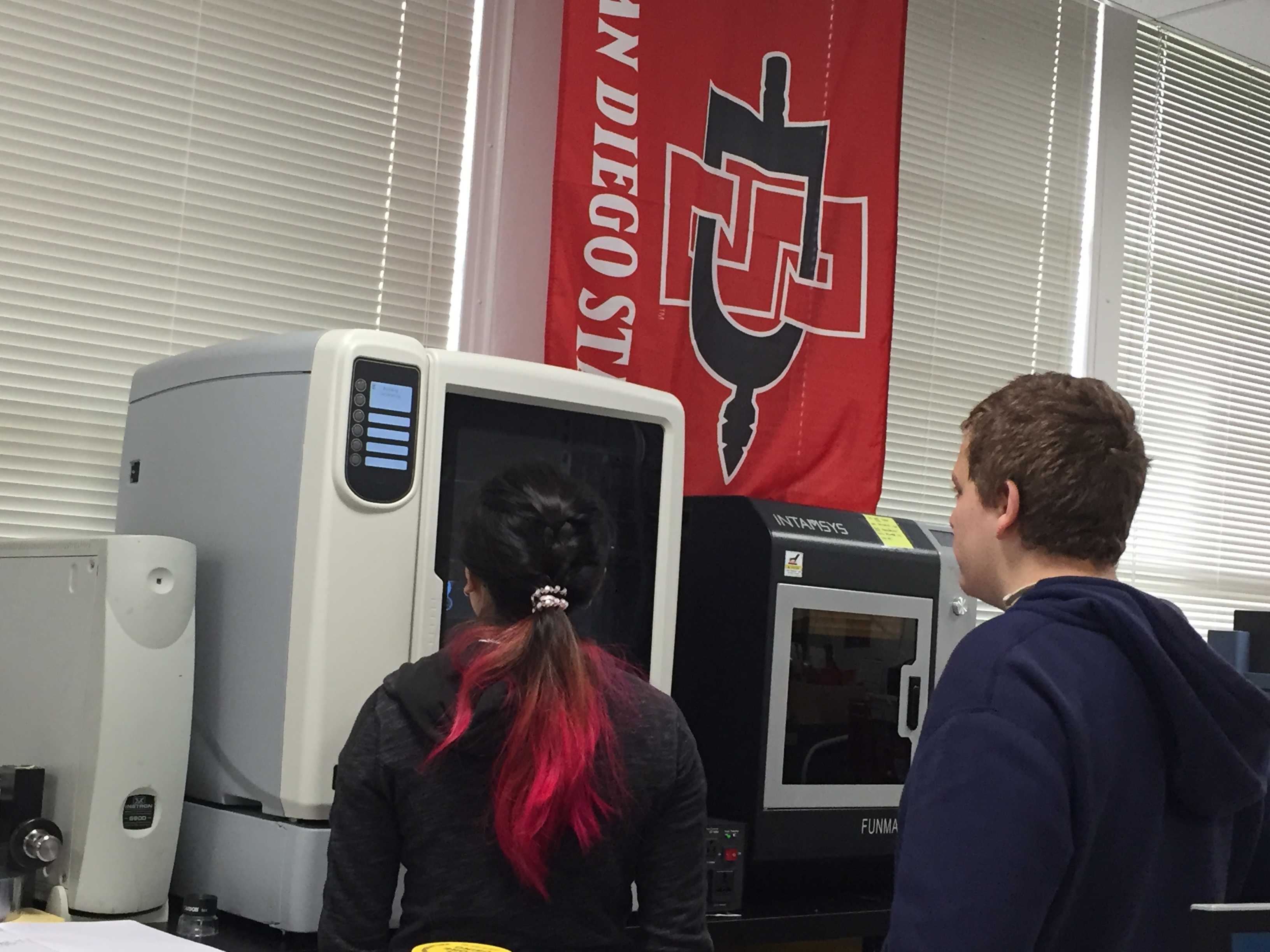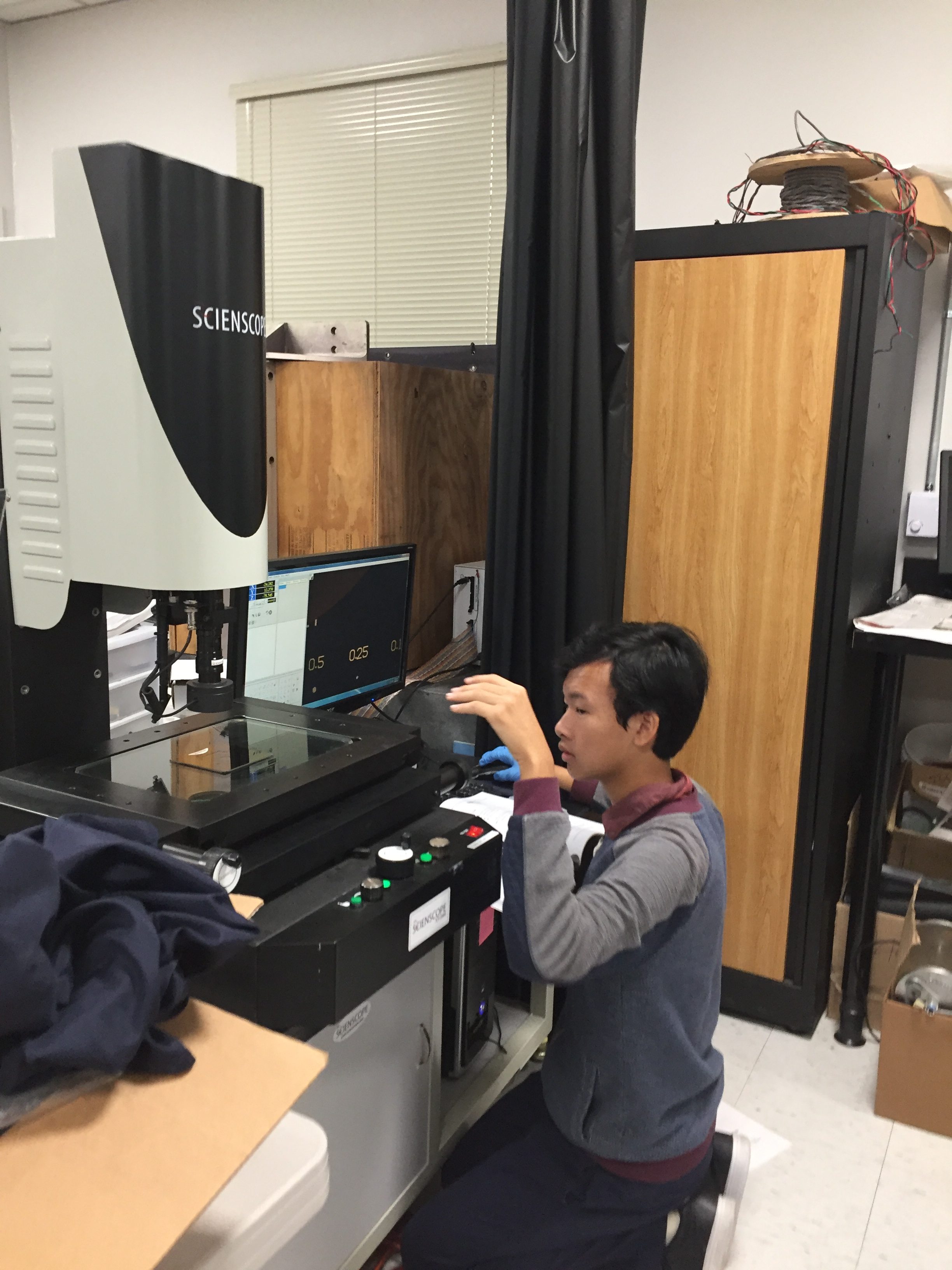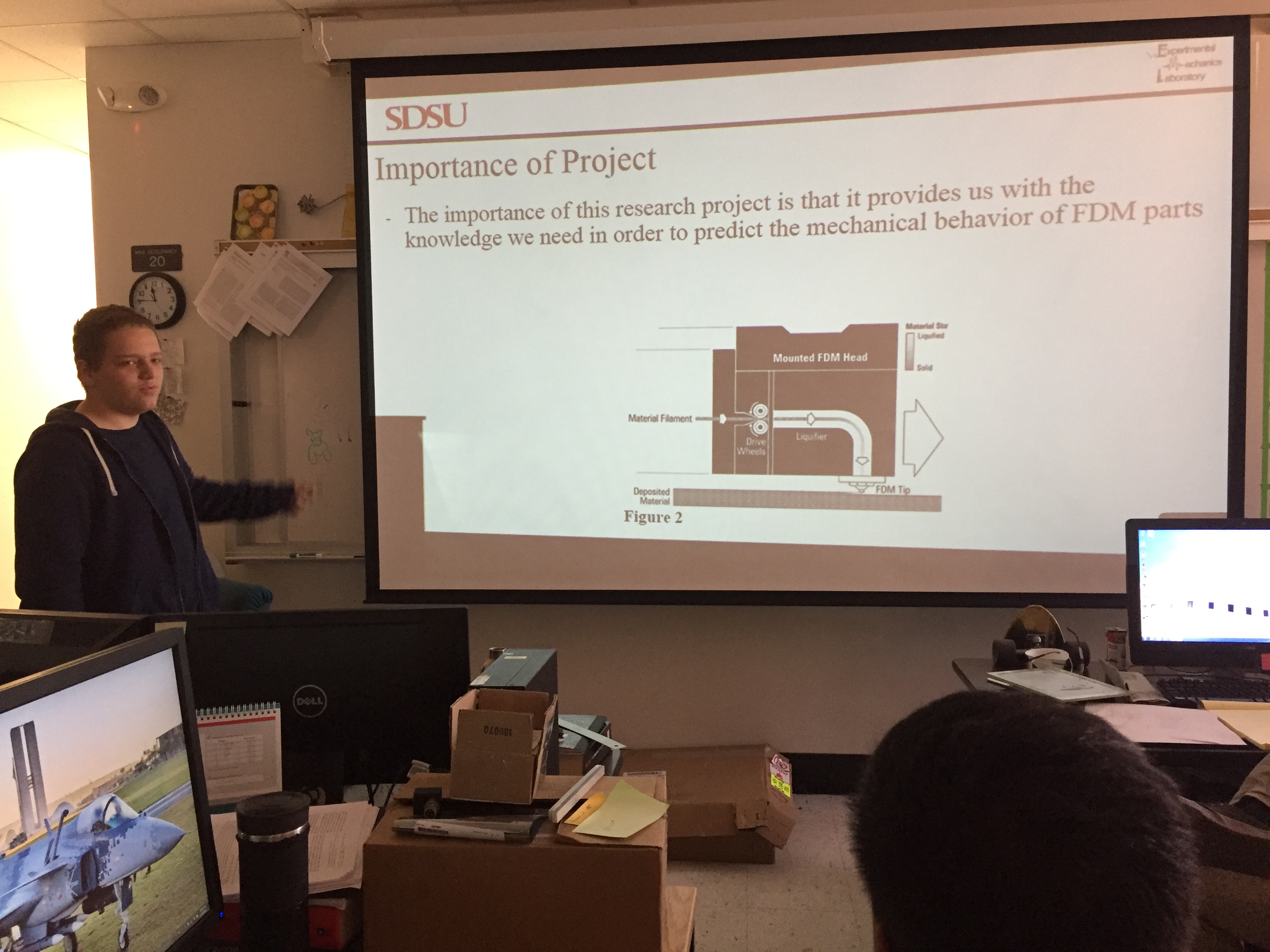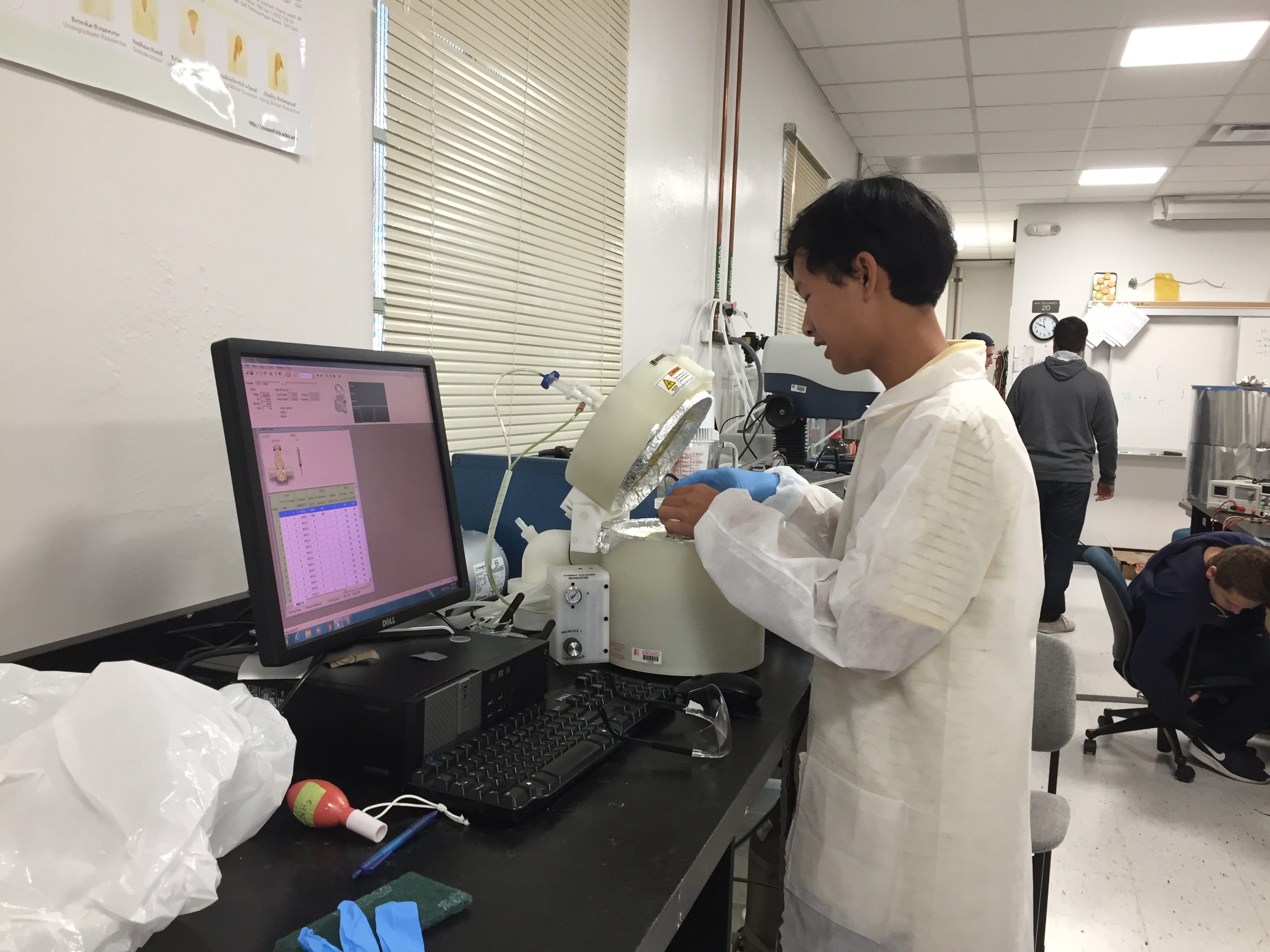Young Engineer Experience
The Young Engineer Experience (YEE) at SDSU’s Experimental Mechanics Laboratory is explicitly designed to attract and engage high school students for a five-week deep dive into the engineering profession. Each YEE scholar is assigned a mini-research project, where the scholar works under the guidance and mentorship of the PI and a graduate student. Each scholar is expected to dedicate at least 12-15 hours per week so we can provide you with a challenging yet meaningful experience. Before their arrival for the program, YEE scholars are assigned a dedicated graduate mentor (who serves as the primary Point of Contact) and a brief project description, and some introductory reading materials. While the YEE program is voluntary, we provide the YEE scholars with all the materials and supplies needed for the project. We also allocate a special place in the lab where YEE scholars can perform the assigned research project. YEE scholars are only responsible for transportation to and from campus and all your meals while on campus.
Class of Summer 2024 YEE Scholars
Jesus Hernandez Sadhika Kumar Christina Park
Project Description: Electroactive polymers and their composites with magnetic nanoparticles encompass desirable electrical, magnetic, and mechanical coupling, allowing their integration into flexible and wearable electronics. This class of materials can sustain significant mechanical deformations and potentially be used for energy harvesting or wireless power transfer due to their multifunctional properties. At the same time, additive manufacturing (3D printing) has transformed over the past decade from a mere prototyping process to a viable replacement for subtractive counterparts. In additive manufacturing, the part is made by depositing one layer at a time from the bottom up, reducing scrap and increasing design flexibility. However, additively manufactured parts suffer from reduced strength and stiffness due to the layering effect and suboptimal bonding (i.e., affecting the magnetoelectric behavior). This project aims to expand the printability of a novel magnetoelectric ink formulated at SDSU’s Experimental Mechanics Laboratory using direct ink printing. The primary goal is to 3D print polygons or circular geometries by optimizing the printing parameters and identifying suitable and adaptable slicing software.
Class of Summer 2023 YEE Scholars


Josh Yang Muna Abdullahi
Project Description: Electroactive polymers encompass desirable electrical and mechanical coupling, allowing their integration into flexible and wearable electronics. Electroactive polymers (EAPs) can sustain significant mechanical deformations and potentially be used for energy harvesting to power these devices. At the same time, additive manufacturing (3D printing) has transformed over the past decade from a mere prototyping process to a viable replacement for subtractive manufacturing. In additive manufacturing, the part is made by depositing one layer at a time from the bottom up, reducing scrap and increasing design flexibility. However, additively manufactured parts suffer from reduced strength and stiffness due to the layering effect and suboptimal bonding (i.e., affecting the electromechanical behavior). This project aims to assess the mechanical properties of polyvinylidene fluoride (PVDF) fabricated using additive manufacturing direct ink printing and conventional spin coating processes. The YEE scholars will explore the dissolution of PVDF beads in dimethyl sulfoxide (DMSO) at different concentrations, assessing the effect of viscosity on printability and deposition. The scholar will also study the effect of the manufacturing process on the resulting electrical and mechanical properties.
Class of Summer 2022 YEE Scholars




Shabdika Gubba Allie Xiao Mia Chen Eleyn Xiong
Project Description: Additive manufacturing (3D printing) has transformed over the past decade from a mere prototyping process to a viable replacement for subtractive manufacturing. In the latter, the part geometry is achieved by strategically removing material from a bulk workpiece via machining or drilling, i.e., the notion of subtractive, where the part inherits the properties of the bulk. In additive manufacturing, the part is made by depositing one layer at a time from the bottom up, reducing scrap and increasing design flexibility. However, additively manufactured parts suffer reduced strength and stiffness due to the layering effect and suboptimal bonding. The objective of this project is to assess the mechanical properties of parts fabricated using two different 3D printing processes, namely material extrusion and vat polymerization. A team of two YEE scholars will be responsible for one of these manufacturing processes. Each team will print different sample geometries to evaluate the mechanical properties at different loading rates. For the quasi-static testing rate, the samples will follow standard material testing approaches (e.g., ASTM standards), while circular discs will be used for ultrahigh strain testing using laser–induced shock waves.
Class of Summer 2019 YEE Scholars
 Vincent Ngo
Vincent Ngo
Project Description: Polymers are ubiquitous in many applications and products that we encounter daily from consumer products to spacecraft. The majority of common polymers belong to only one domain; however, there exists a class of polymeric materials that exhibit coupling between mechanical deformation and applied an electric field, in scientific literature, these are commonly referred to as electroactive polymers. A sub-class of the latter is dielectric elastomers which have large mechanical compliance (i.e., low stiffness) and high dielectric properties (i.e., nonconductive materials). Hence, upon the application of an electric field, the polymer, sandwiched between two parallel conductive plates, undergoes a large mechanical deformation defined by the development of Maxwell stress. The objective of this project is to investigate the mechanical response of dielectric elastomer actuators as a function of the amplitude and frequency of the applied field. Since it has been reported that the mechanical deformation hinges on the geometry of the electrode surface area, therefore, another focus of this project is to test multiple electrode designs and their influence on the resulting mechanical deformation. The experimental approach consists of two steps. First, dielectric elastomer actuators with different electrode design will be fabricated using materials currently available at the Experimental Mechanics Laboratory. Second, the mechanical response will be measured using digital image correlation setup. Basic material models will be used to calibrate the measured response.
 Yusuf Morsi
Yusuf Morsi
Project Description: Additive manufacturing (AM) is becoming an important process to accelerate time-to-market while providing the designer with a bigger design envelope. There are different AM processes for metals, ceramics, and polymers with recent advances to include composite materials. The mechanical performance of 3D printed structures is limited to the layer-to-layer tensile strength. The latter is affected by the surface roughness of the beads, the environmental conditions surrounding the print process, and the thermal properties of the material. Recently, the Experimental Mechanics Laboratory at San Diego State University theorized a systematic approach to perform in-depth mechanical analysis of 3D printed structures based on the framework of classical lamination theory. This approach hinges on the bead-to-bead interface strength. Therefore, it is the objective of this project to quantify the interface strength of 3D printed materials while investigating the effect of different process parameters. The experimental approach to accomplish the objective of this project is to develop a novel protocol to measure the interfacial strength at different strain rates and process parameters.
This program is made possible by support from the following agencies.

















